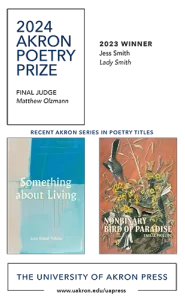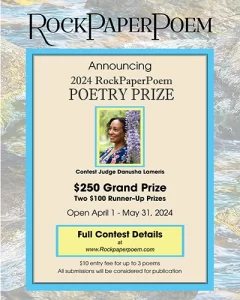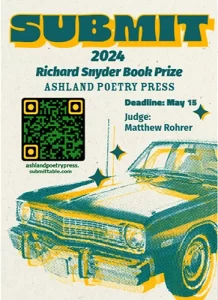Redivider – 2015
When I first picked up this issue of Redivider, I found myself engrossed in the cover art by Patricia Mera. I spent what felt like hours tracing the lines and curves of a red tendril, trying to imagine if it was an arm or an artery, or if the stacked red pyramids resembled anything in particular. In an interview with the artist, printed at the back of the issue, Mera said that she titled the piece “Natural Thoughts” because “of how natural the shapes and order of images came to me.” I felt the title suited the piece perfectly, as my thoughts were repeatedly drawn to nature. When I first picked up this issue of Redivider, I found myself engrossed in the cover art by Patricia Mera. I spent what felt like hours tracing the lines and curves of a red tendril, trying to imagine if it was an arm or an artery, or if the stacked red pyramids resembled anything in particular. In an interview with the artist, printed at the back of the issue, Mera said that she titled the piece “Natural Thoughts” because “of how natural the shapes and order of images came to me.” I felt the title suited the piece perfectly, as my thoughts were repeatedly drawn to nature.
Inside, this issue begins with Redivider’s first flash nonfiction contest winner Sean Ironman and his piece “How to Kill a Mouse.” Fast-paced and commanding, the piece follows a young boy and his experience killing pinkies for his snake in which “the mouse is only being fitted for the snake’s jaws.” With all of the action happening between warnings, it is easy to see why “How to Kill a Mouse” won.
My favorite nonfiction piece in this issue would have to be “Celia” by Laura Bernstein-Machlay. The piece begins with the narrator watching her daughter, Celia, perform circus tricks on a silk rope, as the mother fears for her safety, “if I disappear into my component atoms—into white air—somehow, she will come safely to ground.” Without a lot of excess words, “Celia” manages to vividly capture the relationship between mother and daughter, and great-grandmother. The section breaks were a good choice, although the titles don’t do much work for the sections.
In “The Lesser Horseman” by Keith Rosson, we follow the journey of Pestilence, and two of his fellow horsemen, War and Famine, as they embark on a cruise full of team building exercises to prepare them for the Apocalypse. The character traits and descriptions make this piece shine, from Pestilence’s “body crafted from red and green mountain ranges of ruined skin, a body volcanic with expectorate,” to War’s military fatigues. We are also witness to Pestilence’s blossoming poetry career.
“Rupture” by Pam Squyres is a fiction piece from the point of view of a robot enactor on the boardwalk of the San Francisco Bay. While the girlfriend’s character relied heavily on the “girlfriend” trope, the character of Silverman was very well-developed through the actions of his robot self versus his inner thoughts: “It had to be timed just right. The preparatory twitch, the pneumatic wind-up [ . . . ].” Yet we can see at the end how these two identities merge together in their breaking.
Kicking off the poetry is “Desire,” the first of two poems by Tara Skurtu. Beginning with “That black curl hanging like a fishhook / about your brow— unnoticed until you open [ . . . ]” the poem engages readers enough to read to the end, even though the two center lines fall a little flat. The poem regains its tension at the end with “[ . . . ]obscures the spelling / of the translation for need,” a need that continues throughout the remainder of the issue.
In “Maybe You’ll Come Back,” Anne Champion tantalizes with line breaks that kept me on edge, between “on my back in the pool, I’m surprised // how the sky is not your skin,” and “war. The sex / we long for most will slaughter us. Obsession.” While the closing stanzas offered a little more closure then I would have liked, the imagery of “a deformed, / undeveloped bastard fetus” left me far from disappointed.
“Vapours & Dreams” by Caitlin Pryor describes the moment the narrator watched the funeral of Michael Jackson. When her boss jams them in a room “to watch your coffin hover in midscreen, an alien pod levitating // over a ticker of unbelief.” The narrator brings us back to the moment, hopping between memorialization and reality with “old coffee the perfume / of rooms like these,” and “before scandal was your surname [ . . . ] before // you were our mirror.”
The poem “Mayakovsky,” possibly titled after the Russian futurist poet, by Natalia Holtzman, features interesting line breaks and a form featuring white space. The poem begins:
mourning— how do I
say it—
bored me,
that static process
and continues a similar pattern stanza by stanza. The short lines, however, make the poem read very slowly, making the tension between line breaks even more important to keep the reader’s attention.
With poems featuring trans* rights, Elpenor, and a photo of a hotdog wrapped in telephone wire, this issue of Redivider is sure to keep even the quirkiest mind intrigued!
[www.redividerjournal.org]





